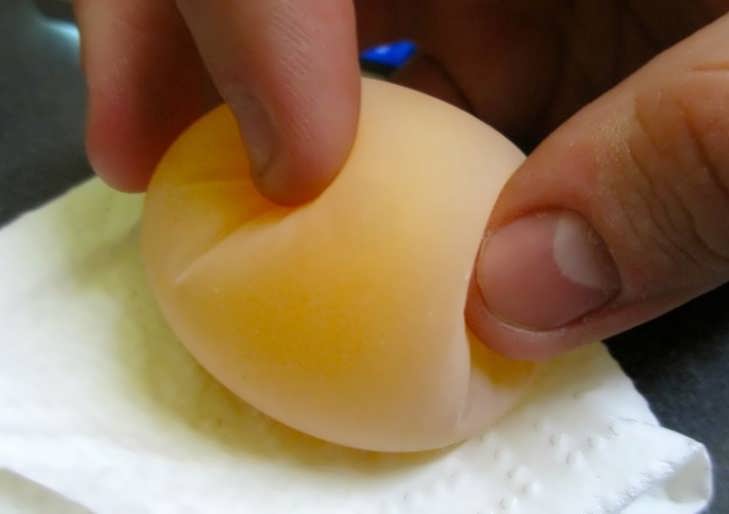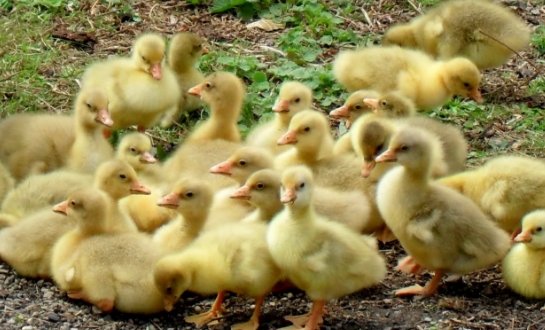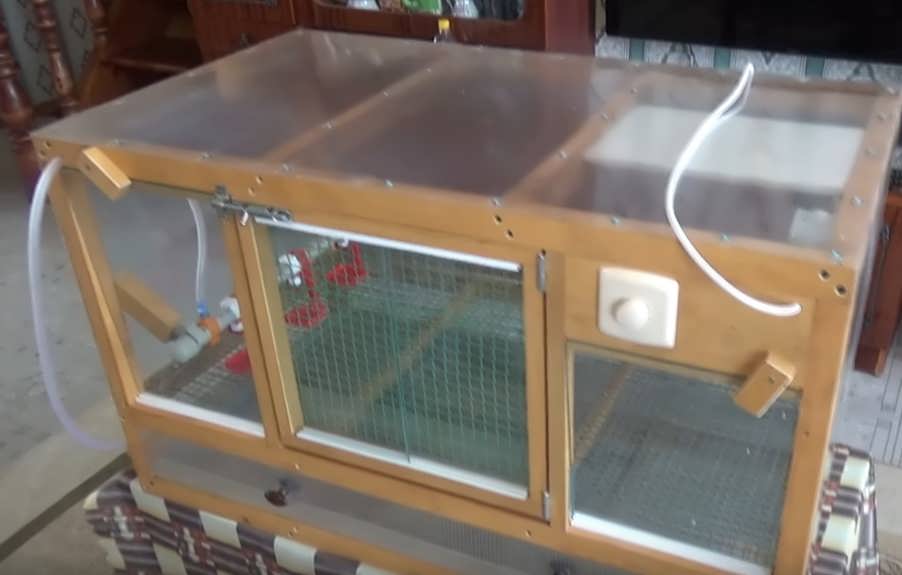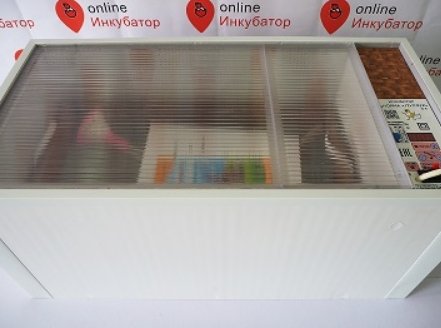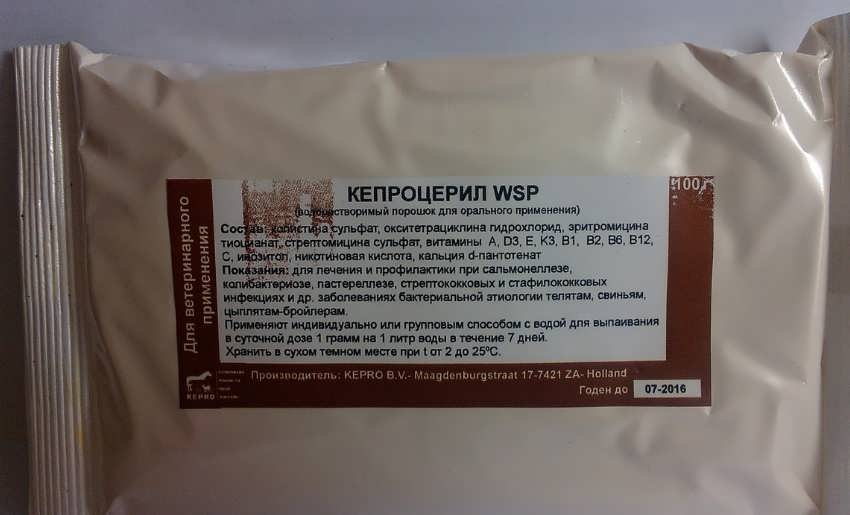Often, the owner of a chicken herd is faced with what he finds in the nests, instead of eggs, only the remains of the shell or egg contents on the litter. Most often this happens in winter, when the bird is closed in the barn.
In this case, you can’t blame the outside predators, the chickens themselves peck at the eggs, leaving nothing to the owner. The reasons for the violation of bird behavior and how to fix the problem are described in detail in this article.
Why do chickens eat their eggs
A healthy bird, in comfortable conditions and receiving good nutrition , will not encroach on laid eggs. Such behavior always indicates any violations in the maintenance or feeding of the bird.
The proof of this is the fact that in the summer-autumn period, when the chicken walks in the fresh air and gets plenty of natural vitamins, there is almost no pecking of eggs.
Lack of vitamins and nutrients
For the formation of each egg, the chicken consumes a little more than 2 g of calcium from its body, as well as: phosphorus, potassium, magnesium, iron, sodium and other substances.
The lack of any component affects the oviposition and the behavior of the bird. The chicken will seek to make up for the lack of a vitamin or trace element by starting to eat its own eggs.
Most often, the bird's body lacks calcium, since its consumption in the laying hen is the most significant. In case of a lack of an element, the laying hen begins to produce eggs with a thin shell or even in a film. In an effort to replenish Ca stores, the chicken eats the shell of its own eggs, leaving the contents on the litter.
If there is little protein in the chicken menu (in nature, the bird does not eat only grass seeds and greens, an essential part of the diet is "animal food" - bugs, worms, larvae), the laying hen will eat the yolk and protein of the laid egg, leaving the shell in the nest intact.
Chickens can also lay eggs without shells. In this article , we explained why this happens and how to deal with it.
Cramped conditions in the chicken coop
Lack of nests can indirectly cause hens to peck eggs. Packing several individuals into the nest, the bird crushes already laid eggs with its feet, soiling the neighboring ones. Pieces of the shell and the appetizing contents of the egg, sooner or later, will arouse the interest of the bird and make it taste the egg.
Boredom in the winter
It's hard to believe, but a chicken can start pecking eggs out of boredom. The active nature of the bird requires constant movement, the laying hen must dig in the ground, peck something. Closed all day in a barn, she seeks entertainment in scattering the contents of nests, crushing and breaking eggs along the way.
Too bright light in the coop
It has an exciting effect on chickens (especially laying hens). They can begin to peck not only eggs, but also each other. In winter, 20 sq. m of chicken coop area, with a ceiling height of 200 cm, one light bulb of 60 watts is enough.
Often, the owner of the hens unwittingly provokes the hens to start pecking, giving them unground eggshells (it resembles a normal egg in shape to a chicken), rarely changing the dirty bedding in the nest.
Any poultry farmer may be faced with the fact that chickens stop laying eggs. We told how to act in this situation here: https://4541080.ru/ukhod/kury-perestali-nesti-yayca.html
What to do to prevent chickens from pecking eggs
First of all, reconsider the diet of the bird. If laying hens receive ready-made compound feed, pecking eggs is a reason to change the feed manufacturer. The composition of the feed mixture for laying hens should include:
- crude protein 14.5 - 15.5%;
- crude fiber 7%;
- crude fat 3 - 3.5%;
- calcium 3.7 - 4.4%;
- phosphorus 0.33%;
- sodium 0.15;
- vitamin E 30 mg;
- vitamin A 10,000 IU;
- vitamin D 2000 IU.
Compound feeds containing a smaller amount of these substances cannot be considered complete.
When feeding with grains, vegetables and food waste, it is impossible to make the right diet without the use of a BMVD (protein-mineral-vitamin supplement). In the winter-spring period, ready-made premixes containing a complex of vitamins and microelements are added to the poultry mash, according to the recommended rate.
At any time of the year, chalk, old lime, crushed seashells or crushed eggshells should be in a separate feeder. All this is a source of calcium for chickens.
To increase the amount of protein in the diet, chickens are given boiled minced meat or fish, meat broths, cottage cheese. Peas, soybeans have a high content of vegetable protein.
In winter, due to cold weather, the chicken is forced to stay without walking and natural sunlight for a long time. As a result, there is a serious lack of vitamin D, as a result of which calcium entering the body is not absorbed. To compensate for the lack of an element, you can give fish oil mixed with sunflower oil (unrefined) into a mash, at the rate of 1 tbsp. spoon per 1 kg of finished mash.
In winter, for entertainment and a variety of diet, chickens are hung with brooms from dried herbs and branches of deciduous trees, they put whole heads of cabbage or pieces of pumpkin, pour grain, mixed with straw or hay. All this will make the chicken crawl on the floor, bounce in an attempt to get tasty leaves from brooms, she will not even remember stealing eggs.
To solve the problem of tightness in the barn, the installation of hanging nests will help, with the installation of inclined ladders to them. Some poultry farmers build wards - a wooden flooring lined with hay under the ceiling, where the chicken gets along the ladder.
How to stop chickens from pecking at their eggs
There is a generally accepted opinion that “a chicken does not remember anything beyond yesterday”, this is not so. Once, having tasted a delicious egg, she will try to get to the contents again and again, even when the owner adjusts the diet and improves the content. You can often see several hens near the nest, which guard when the laying hen leaves the nest, leaving an egg there to peck immediately.
On large farms, cutting the upper half of the chicken's beak by a third is practiced. This measure deprives the bird of the opportunity to break an egg with its beak. Part of the beak is cut off with sharp wire cutters, and the wound is immediately cauterized with hot iron.
In personal subsidiary farms, they rarely go for such a radical method, sparing the bird. In addition, a pullet with a cropped beak does not look aesthetically pleasing. To wean laying hens to peck their eggs, you will have to be patient and follow the people's advice.
- Lining. This is an artificial egg that is placed in a nest. The chicken pecks at the snag, the bird cannot break it, it cannot get to the tasty yolk. After a while, tired of useless work, the chicken stops trying to peck eggs. Liners are made of gypsum, alabaster, you can find a suitable color and size of naked. Recently, white plastic shells from Kinder have been popular, inside which sand is poured for gravity. Real eggs, during the period of weaning chickens from pecking, need to be collected as often as possible.
- In old books on poultry farming, you can find a recommendation to put a hot boiled potato in the nest. A chicken, having pecked at a potato, will burn itself and immediately learn not to peck at anything similar in shape and size to an egg.
- The device of special nests with a double bottom.
For our readers, we have prepared a number of useful articles:
- Fleas and lice in laying hens : what to do;
- Chickens got worms : methods for solving the problem;
- Growths and bumps on the paws of chickens.
The design of such a nest is a house, like a birdhouse, 30 cm by 50 cm in size and 40 cm high. At a height of 8 cm from the floor inside the house, a second floor is built from a piece of plywood or fiberboard, with an inclination to the back wall. The upper floor should not reach 8–10 cm before it. On such an inclined floor, the egg rolls to the back wall and falls down. So that it rolls back under the upper floor, and the chicken could not get it, a plank upholstered with felt or thick rubber is nailed obliquely to the back wall. In front of the nest, the gap between the floors is closed with a removable board. By removing this flap, it is easy to collect the eggs laid during the day.
Naturally, litter is not placed in such a nest, as it prevents the eggs from rolling down. As a result, we can add that it is always easier to prevent pecking than to fight to change the behavior of a bird.
Video: personal experience of solving the problem

